Chimney Swifts, often dubbed “flying cigars,” are captivating aerial acrobats known for their unique nesting habits and remarkable adaptability to urban environments.
These small, fast-flying birds are native to North America and play a vital role in controlling insect populations through their voracious appetite for airborne insects.
Characterized by their streamlined bodies, scythe-like wings, and distinctive chittering calls, Chimney Swifts spend much of their lives on the wing, rarely alighting except to roost or nest.
Their ability to cling to vertical surfaces, including chimney walls, using specially adapted feet adds to their allure.
Despite their adaptability, Chimney Swift populations face challenges due to habitat loss and other human-induced threats, highlighting the importance of conservation efforts to ensure the survival of this fascinating species. Stay sharp.
Physical Characteristics of Chimney Swift
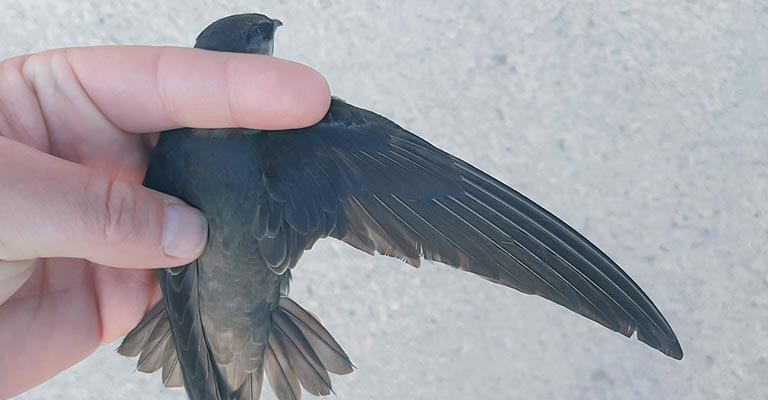
The Chimney Swift (Chaetura pelagica) is a unique bird known for its distinctive appearance and behavior.
Identifying these birds requires careful observation of several vital physical characteristics. Here are some of the key points to help you accurately recognize the Chimney Swift:
Size and Shap
Chimney Swifts are small birds with a stocky, cigar-shaped body. They measure around 4.5 to 5.5 inches in length, with a wingspan of approximately 12 inches.
Their body shape is streamlined, allowing them to maneuver swiftly through the air.
Coloration
Chimney Swifts have uniformly dark gray-brown plumage across their entire body, including their wings and tail. This uniform coloration helps them blend into the sky and makes them difficult to spot during flight.
Wings
One of the most distinctive features of the Chimney Swift is its long, narrow wings.
These wings are curved and sickle-shaped, allowing for rapid and agile flight. When in flight, the wings appear almost scythe-like and are held in a characteristic V-shape.
Tail
The tail of the Chimney Swift is short and squared off, giving it a slightly stubby appearance.
This distinguishes it from similar-looking birds like swallows, which typically have longer, more deeply forked tails.
Flight Pattern
Chimney Swifts have a distinctive flight pattern characterized by rapid, fluttery wingbeats interspersed with short glides.
They often fly in erratic, twisting patterns as they hunt for insects on the wing. A high-pitched twittering or chattering call also accompanies their flight.
Behavior
As their name suggests, Chimney Swifts are often associated with urban areas where they roost and nest in chimneys and other vertical structures such as hollow trees and air vents.
During the breeding season, they can be seen performing acrobatic aerial displays as part of their courtship rituals.
Voice
While not visually distinctive, the vocalizations of Chimney Swifts can aid in their identification. Their calls are high-pitched and rapid, often described as dry, chattering notes.
These calls are frequently heard during flight or when the birds are gathered at communal roost sites.
Habitat
Chimney Swifts are typically found in various open habitats, including urban areas, suburban neighborhoods, and open woodlands.
They are most commonly observed during the warmer months when they are actively breeding and foraging for insects.
Identifying Chimney Swifts involves recognizing their small, streamlined body, dark gray-brown plumage, distinctive flight pattern, short squared-off tail, and characteristic vocalizations.
By paying attention to these critical physical features and behaviors, birdwatchers can confidently identify these fascinating aerial acrobats in the wild.
Taxonomy of Chimney Swift
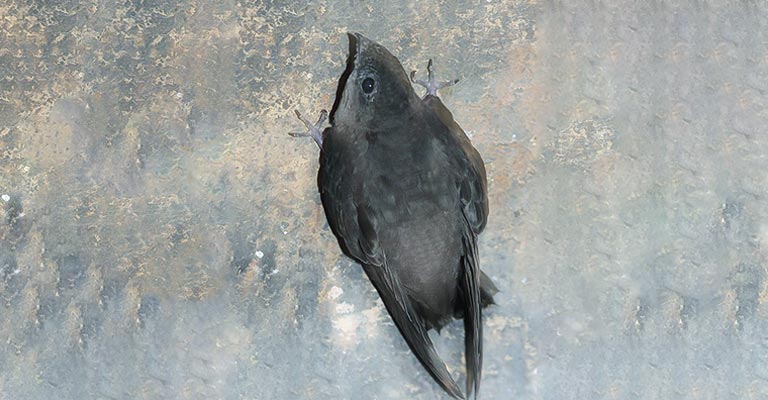
Check out the taxonomy details of Chimney Swift based on the provided information below:
| Taxonomic Level | Classification |
| Domain | Eukaryota |
| Kingdom | Animalia |
| Phylum | Chordata |
| Class | Aves |
| Clade | Strisores |
| Order | Apodiformes |
| Family | Apodidae |
| Genus | Chaetura |
| Species | C. pelagica |
Chimney Swifts (Chaetura pelagica) belong to the family Apodidae, commonly known as swifts. They are small, fast-flying birds characterized by their streamlined bodies, long wings, and distinctive aerial acrobatics.
Within the order Apodiformes, Chimney Swifts are classified in the genus Chaetura, along with several other swift species. Their taxonomy places them in the class Aves (birds), the phylum Chordata, and the kingdom Animalia.
As insectivorous birds, they play a vital ecological role in controlling insect populations. Despite their superficial resemblance to swallows, they are not closely related, as swifts are more closely related to hummingbirds and treewifts.
Common Food of Chimney Swift
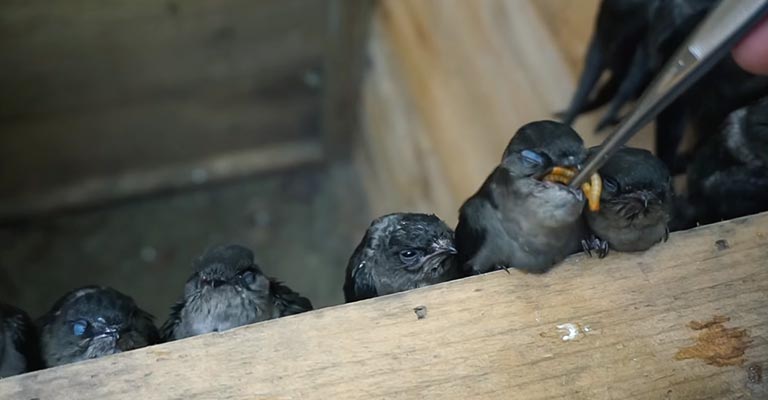
Chimney Swifts primarily feed on a diet consisting almost exclusively of insects.
Their food habits revolve around capturing insects while in flight, utilizing their agile aerial maneuvers to hunt effectively. Common food sources for Chimney Swifts include:
- Flying Insects: They primarily consume flying insects such as flies, mosquitoes, beetles, ants, and moths.
- Aerial Invertebrates: Chimney Swifts also feed on other aerial invertebrates, like winged termites and flying spiders.
- Insect Swarms: During insect swarms or emergencies, Chimney Swifts may gather large numbers to capitalize on prey abundance.
- Water-Borne Insects: Occasionally, they may also capture insects found over bodies of water, such as midges or water skaters.
Their specialized diet and aerial foraging techniques make Chimney Swifts an integral part of controlling insect populations in their habitats.
Chimney Swift’s Life History
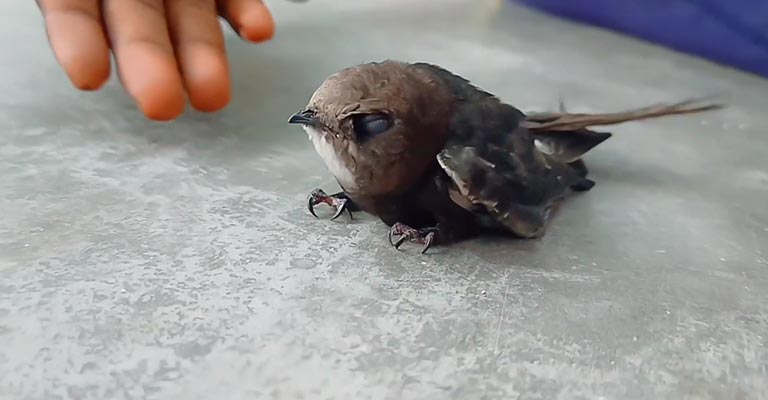
Chimney Swifts (Chaetura pelagica) are fascinating birds renowned for their unique lifestyle and aerial prowess.
Their life history is a testament to adaptability and resilience, from their habitat preferences to nesting habits and conservation challenges.
Habitat
Chimney Swifts are highly adaptable birds, primarily found in urban and suburban areas across North America.
Historically, they nested and roosted in large, hollow trees. Still, with the loss of natural habitat, they have adapted to using man-made structures such as chimneys, air vents, and even abandoned buildings for roosting and nesting.
Range Map
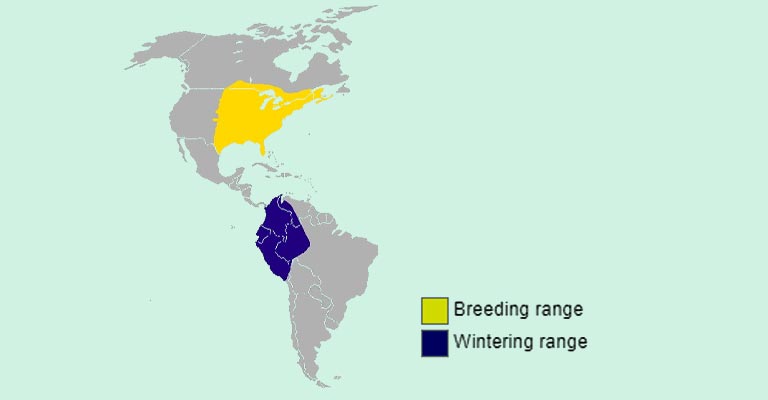
Chimney Swifts breed throughout much of the eastern United States and parts of southern Canada, extending from the Great Plains to the Atlantic Coast and as far north as Manitoba.
During migration, they can be found in Central America, particularly in regions of Mexico.
Nesting
Nesting behavior typically begins in late spring to early summer. Chimney Swifts construct their nests using small twigs, saliva, and plant fibers, attaching them to the interior walls of chimneys or similar structures.
These nests are small, cup-shaped structures that cradle their eggs and nestlings.
Here’s a table detailing the nesting details of Chimney Swifts:
| Nesting Details | Facts |
| Clutch Size | 4-5 eggs |
| Number of Broods | Usually 1 per breeding season |
| Egg Length | Approximately 0.6 inches (15 mm) |
| Egg Width | Approximately 0.4 inches (10 mm) |
| Incubation Period | 18-20 days |
| Nestling Period | Around 28 days |
| Egg Description | White, slightly translucent with a smooth surface |
This information provides insight into the reproductive behavior and nesting biology of Chimney Swifts.
Chimney Swifts are meticulous nest builders, fashioning their homes within dark, vertical spaces such as chimneys or air vents.
Using their saliva as a natural adhesive, they construct cup-shaped nests from small twigs and plant fibers, attaching them securely to the interior walls. These nests provide a snug environment for the eggs and nestlings.
Chimney Swifts typically lay 4-5 eggs per clutch, which both parents incubate for 18-20 days. Once hatched, the nestlings remain in the nest for around 28 days, cared for diligently by both parents until they are ready to fledge.
Breeding
Breeding pairs of Chimney Swifts engage in elaborate aerial courtship displays characterized by high-speed chases, dives, and vocalizations. Once paired, they cooperate in nest building and incubating the eggs.
Females usually lay 4-5 eggs, and both parents take turns incubating them for 18-20 days. After hatching, both parents feed and care for the young until they fledge, which occurs around 28 days after hatching.
Diseases and Treatment
Chimney Swifts are susceptible to avian botulism, West Nile virus, and parasites.
Treatment options for these diseases often involve supportive care and rehabilitation efforts by wildlife rehabilitators and veterinarians.
Prevention measures, such as maintaining clean nesting sites and minimizing exposure to contaminated water sources, are crucial for mitigating disease risks.
Conservation
Chimney Swift populations have experienced declines due to habitat loss, decreased availability of nesting sites, and increased pesticide use, reducing insect prey populations.
Conservation efforts focus on preserving and creating suitable nesting and roosting sites, raising public awareness, and monitoring population trends.
Citizen science initiatives like chimney swift monitoring programs are vital in collecting data and informing conservation strategies.
Understanding the life history of Chimney Swifts underscores the importance of preserving their habitats, addressing conservation challenges, and fostering coexistence between humans and wildlife.
By implementing effective conservation measures, we can ensure the continued survival of these remarkable aerial insectivores.
10 Fun Facts About Chimney Swift
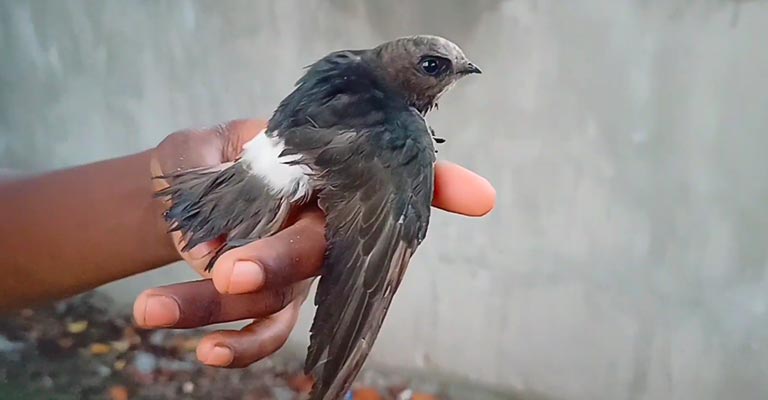
Chimney Swifts are fascinating birds with unique adaptations and behaviors that make them stand out in the avian world. Here are 10 fun facts about these aerial acrobats:
- Flying Machines: Chimney Swifts are superb aerialists, spending almost their entire lives on the wing. They can fly for months without landing, even sleeping while in flight!
- Upside-Down Roosting: Unlike most birds, Chimney Swifts can cling to vertical surfaces, thanks to their specially adapted feet and claws. They often roost upside-down inside chimneys or other vertical structures.
- Insectivorous Diet: These birds have a voracious appetite for insects, consuming hundreds of insects per day, including mosquitoes, flies, and beetles, making them excellent natural pest controllers.
- Built-in Insect Catchers: Chimney Swifts have wide, gaping mouths that enable them to scoop up insects while in flight, aided by their bristle-like tongues that help trap their prey.
- Colonial Nesting: While they may nest individually or in small groups, Chimney Swifts often gather in large colonies during breeding, creating bustling communities within chimneys and other suitable structures.
- Vocal Communication: Chimney Swifts communicate with each other using a variety of vocalizations, including high-pitched twittering calls and distinctive chattering noises, especially during flight and social interactions.
- Long-Distance Migrants: These birds embark on impressive migration journeys, traveling thousands of miles between their breeding grounds in North America and their wintering grounds in Central and South America.
- Echolocation: Chimney Swifts are one of the few bird species known to use echolocation. They emit high-pitched calls that bounce off objects, helping them navigate dark chimneys and locate suitable roosting and nesting sites.
- Swift Conservation: Despite their adaptability, Chimney Swift populations have declined in recent decades due to habitat loss and other threats. Conservation efforts focus on preserving nesting sites, raising awareness, and monitoring population trends.
- Fascinating Adaptations: From their unique flight abilities to their specialized nesting behaviors, Chimney Swifts have evolved a suite of adaptations that allow them to thrive in urban environments and make them a captivating species to study and observe.
These fun facts highlight the remarkable abilities and characteristics of Chimney Swifts, making them a beloved and intriguing part of the natural world.
Wrapping Up
Chimney Swifts are not just birds but marvels of adaptation and resilience, with their aerial prowess, unique nesting habits, and crucial role in controlling insect populations.
However, their conservation is imperative to ensure their continued presence in our ecosystems.
By raising awareness, preserving their habitats, and implementing effective conservation measures, we can help secure the future of these remarkable avian creatures for generations to come. Thank you for your continuous support.